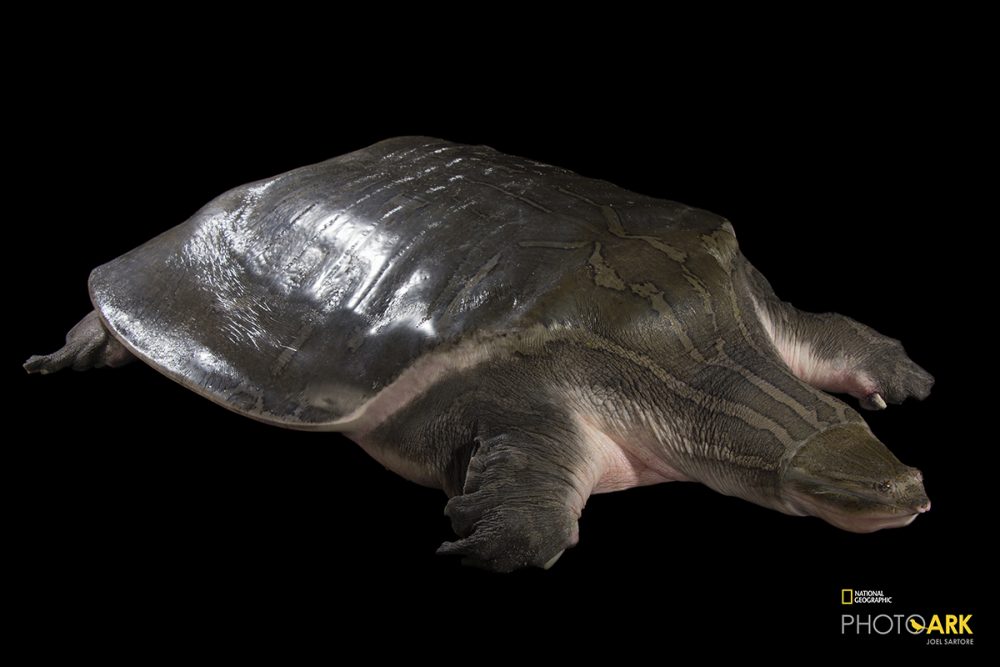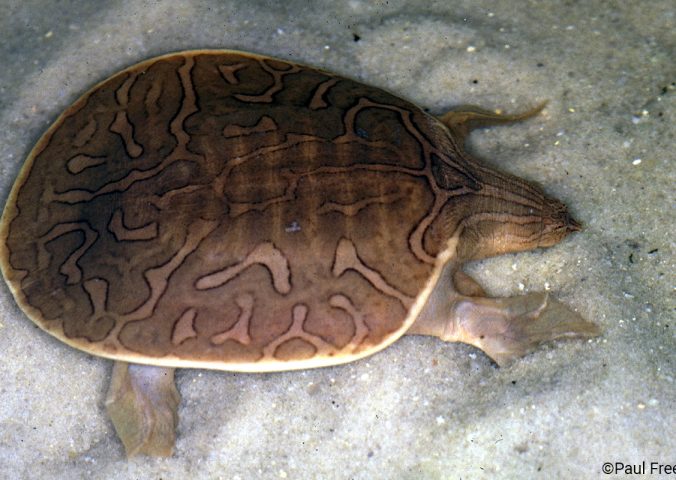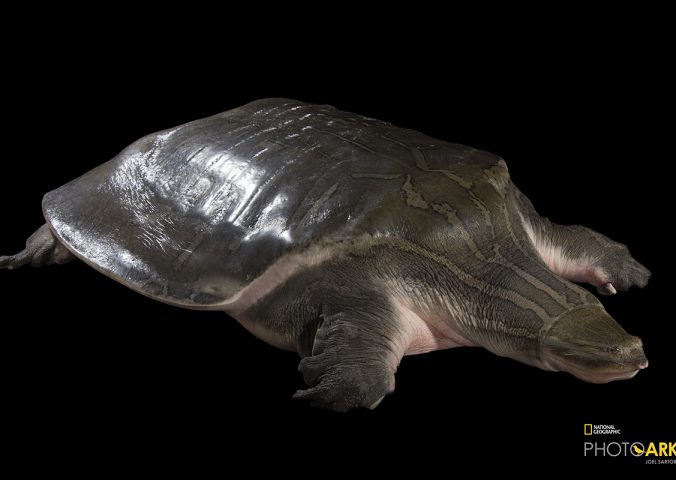About
The spectacular Asian narrow-headed softshell turtle may be the world’s largest freshwater turtle, growing to over 1.2 metres in length and weighing up to 254 kilograms!
Despite its appearance, this enormous species is a highly specialised ambush predator. Individuals can rapidly extend their head and neck whilst simultaneously expanding their mouth and throat to vacuum fish into their mouth in the blink of an eye!
The Asian narrow-headed softshell turtle is one of three species in the genus Chitra. Together, these three species diverged from all other living turtles more than 40 million years ago, around the same time humans last shared a common ancestor with tamarin and capuchin monkeys.
Sadly, these distinctive and beautiful turtles are listed as Critically Endangered by the IUCN Red List as a result of their highly restricted distribution and population declines. The species is imperiled by exploitation for food and the international pet trade, egg collection, and is accidentally killed by fishing practices across its range. Moreover, following the construction of dams in their range, their habitats are frequently flooded, sabotaging nest sites.
This species is listed on CITES Appendix I. Captive breeding and head-starting of hatchlings is practiced across parts of its range but must be expanded in scope, along with better safeguarding of the remaining habitats and populations of the species, to improve the outlook for this magnificent turtle.
- Order: Testudines
- Family: Trionychidae
- Population: Unknown
- Trend: decreasing
- Size: 120cm (?)
- Weight: 254kg
EDGE Score
Distribution
This species is found in the Mtheae Klong basin, Thailand, Java, Sumatra and Malaysia.
Habitat and Ecology
This species is found in large rivers with clear water and sandy bottoms. They are likely to remain only in freshwater sections of rivers.


